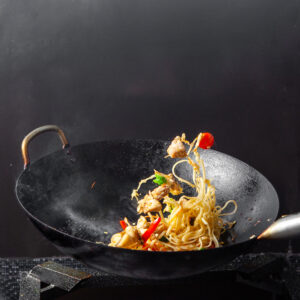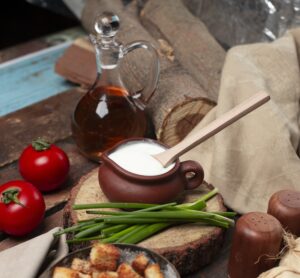
Lard in world cuisines – do only Poles appreciate it?
Lard is often associated with traditional Polish cuisine – a slice of bread with a pickled cucumber and a generous portion of aromatic lard with cracklings. However, this animal fat is not exclusively a Polish specialty. Various countries also use it in their culinary traditions, albeit in slightly different forms.

Stir-frying in a wok – differences between Asian and European cooking
A wok is a distinctive, deep pan that has been a fundamental tool in Asian kitchens for hundreds of years. Thanks to its shape and the way it heats up, cooking in a wok produces results very different from traditional frying known in European cuisine.

Why did traditional rural cuisine rely on lard?
For centuries, lard has been one of the staple ingredients of rural cuisine in Poland and many other European countries. In the past, it was an indispensable part of everyday meals. But where did its remarkable popularity in the countryside come from?

Caramelized onion – the perfect addition to everything!
Aromatic, delicate, and melting in your mouth. That’s exactly how you can briefly describe caramelized onions, which can be used in many recipes. They are the perfect addition to meats, soups, or even as a filling—for example, in puff pastry pouches. It all depends on your creativity.

Lard among the most unusual European dishes
We live in a time when we have the opportunity to try dishes from many different cultures.

What is confiting?
Confectioning is a culinary technique. It is divided into two methods – cooking and baking in fat.

Sous-vide method – what is it really about?
What is sous vide? Sous vide (French for “under vacuum”) is a method of cooking dishes or their ingredients in tightly sealed plastic bags, in water at a relatively low temperature that never exceeds 100°C (212°F).
